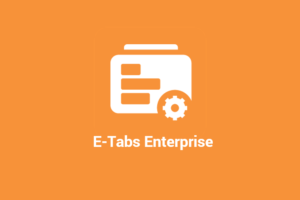To Automate Or Not To Automate? That Is The Question…
In today’s fast-paced business landscape, time is of the essence. As organisations strive for increased productivity and efficiency, one area that often consumes valuable resources is report generation. While timely delivery of reports is crucial, it becomes meaningless if it contains inaccurate data. This is often the result of manual report production, compromising the integrity and quality of the data insights. However, with the advancements in technology, automating reports has emerged as a game-changer.
Report Automation offers numerous benefits, including the mitigation of human error and the ability to create engaging reports in a fraction of the time compared to manual methods. In this article, we hear from E-Tabs’ Client Consultant Russ Budden, who shares his perspective on the topic based on personal experiences.
Maximising Efficiency: The Power of Automating Reports
“It’s fair to say that agencies who run large scale projects and produce collectively hundreds of reports each day would (and do) benefit from report automation solutions. However, it would be unfair to say that the idea of automating reports is exclusively for them. It is a universal desire for all research agencies and consultancies regardless of size to produce their reports more efficiently.
Improving the efficiency of the reporting process not only shortens turnaround time but improves the accuracy of a report and allows the agency to provide ‘added value’ to their client. Whether it be extra reporting capabilities (i.e. increased frequency of reporting) or allowing the agency to do more with the data. In other words, spending more time discovering the insights and less time creating them.
With all sizes of agencies trying to find process efficiencies in addition to ever-decreasing client budgets, the need to think smartly about how best to utilise their workforce is key. Having an exec sitting in front of PowerPoint, putting together a 40-slide report every month could take days each month. Across the year, that exec could easily be spending at least a month a year producing that report. Instead, they could be automating these reports, reallocating their valuable time to uncover key insights instead of spending countless hours on the pure production of it.”
Countless Late Nights Manually Populating Your Slides?
“Indeed, I spent many late nights as an exec, manually populating and updating charts in reports. With any manual process, not only is there the very real possibility of human errors creeping in, it was also extremely labor intensive and tedious creating the same report over and over again. I taught myself macros in a vain attempt to make the process easier, but they had to keep being re-developed for new projects and new waves of data within an existing project. In fact, I would predict that many times it actually took longer working out where I went wrong in the macro, than actually manually entering the new data!
In many cases when I’m discussing the merits of report automation with a prospect, it is usually countered by their concerns about their existing internal processes – ‘We don’t do it that way?’ ‘We’ve always produced our data tables this way?’ etc. Although a process might have always been performed historically a certain way, does that mean that the process is the most efficient way? We’ve seen our clients who use our report automation solutions improve the efficiency of their reporting – whether it’s done by themselves using our software or whether it’s run by us on their behalf. Perhaps it might be time to assess whether your current reporting processes are as efficient as they could be? I’d be more than happy to chat to you about them and see how we can improve them together.”
If you have any questions, please fill in the form below and a member of our team will be in touch!





